SFP ports support Ethernet switches to connect to a wide variety of Ethernet cables and connectors in order to extend functionality in the network. As a hot-pluggable / hot-swappable I/O device, it supports both RJ45 and fiber type modules, extending the flexibility beyond RJ45 and fixed fiber ports in practical applications. Additionally, further distances can be achieved through SFP selections from existing fixed ports.
Module type
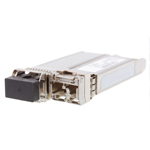 | SFP TransceiversThe small form-factor pluggable (SFP) defined in IEEE 802.3 and SFF-8472 is a compact, hot-pluggable network interface module used for both telecommunication and data communications applications. An SFP interface on networking hardware is a modular (plug-and-play) slot for a media-specific transceiver in order to connect a fiber-optic cable or sometimes a copper cable. Note: SFP (Mini-GBIC) is a new generation GBIC, almost half the size and gaining in popularity |
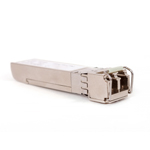 | SFP+ TransceiversThe SFP+ (enhanced small form-factor pluggable) defined by IEEE 802.3ae, SFF-8431 and SFF-8432 is an enhanced version of the SFP that supports data rates up to 16 Gbit/s. It supports 8 Gbit/s Fiber Channel, 10 Gigabit Ethernet and Optical Transport Network standard OTU2. It is a popular industry format supported by many network component vendors. Note: SFP+ works like XFP, but is smaller and with lower cost, rapidly becoming mainstream |
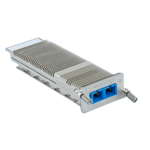 | GBIC TransceiversGigabit interface converter (GBIC) is a standard for transceivers and commonly used with Gigabit Ethernet and fiber channels. The module is now replaced by SFP. |
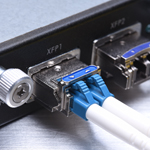 | XFP TransceiversThe XFP (10 gigabit small form factor pluggable) is a standard for transceivers for high-speed. The module is now replaced by SFP+. |
Connector type
Among the various types of fiber connector, SC (Square Connector / Subscriber Connector) and LC (Little Connector / Lucent Connector) are two of the most commonly used connectors.

LC Connector
High-density connections, SFP and SFP+ transceivers, XFP transceivers - LC connector uses a 1.25mm ferrule with a retaining tab mechanism.

FC Connector
Datacom, telecom, measurement equipment, single-mode lasers - The FC is designed for durable connections, and can be used in high-vibration environments.
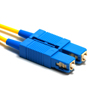
SC Connector
Datacom and telecom; GPON; EPON; GBIC; MADI - SC connectors use a round 2.5mm ferrule and come with a locking tab that enables push-pull off mating mechanism to offer quick insertion and removal.

ST Connector
Datacom - ST connector utilizes a 2.5mm ferrule with a round plastic or metal body. The connector stays in place with the help of a “twist-on/twist-off” bayonet-style lock mechanism.
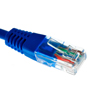
RJ45 Connector
Datacom, RJ45 is utilized to connect two switches with copper interface over Cat5 or higher cable, commonly used for transmitting data in a short distance.
| Type | Ferrule | IEC definition | Applications |
|---|---|---|---|
| SC | ψ2.5mm | IEC 61754-4 | High-density connections |
| LC | ψ1.25mm | IEC 61754-20 | Datacom, telecom, measurement equipment |
| FC | ψ2.5mm | IEC 61754-13 | Datacom and telecom; GPON; EPON; GBIC; MADI |
| ST | ψ2.5mm | IEC 61754-2 | Datacom |
Cable type & Performance
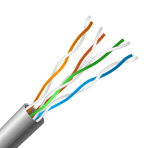 | Ethernet cableCat.5 or higher for 100Base, Cat.5e or higher for Gigabit, Cat.6A or higher for 10G. There are two common types of Ethernet cable: Unshielded twisted-pair (UTP) cable and Shielded twisted-pair (STP) cable. Generally speaking, STP cable is a twisted pair cable confined in foil or mesh shield that guards the cable against electromagnetic interference, making it highly recommended for networking environments. |
 | Optical FiberThere are two main types of material used for optical fibers: glass and plastic. They offer widely different characteristics and find uses in very different applications. Generally, plastic fiber is used for very short-range and consumer applications, whereas glass fiber is used for short/medium-range (multi-mode) and long-range (single-mode) telecommunications. Based on TIA-598C standard definition, for non-military applications, single mode cable is coated with a yellow jacket, and multimode fiber is coated with orange or aqua. |
Optical Fiber Core Diameters
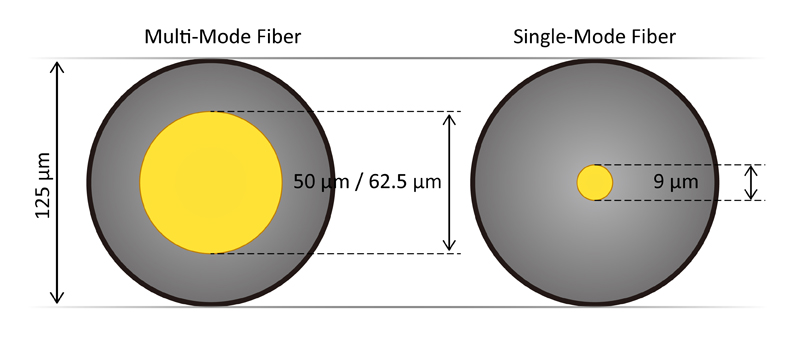
Data transmission and Distance
| SFP | SFP+ | |
|---|---|---|
| Data Rate | 1.25G 2.5G/3G/4.25G | 6G/8.5G/10G |
| Distance | 100 m up to 150km | 220m up to 80km |
What is DDM
Ethernet is a technology that is defined by IEEE 802.3 standard. This standard defines the types of media, wire, fiber optics and wireless, the electrical characteristics and the addressing scheme for an Ethernet network.
Ethernet is a packet communications technology, designed for computer to computer communications. The rules concerning Ethernet communications assumes every machine is connected to the same piece of wire, much like a meeting of a group of people in one room. If a machine wants to communicate (talk) it listens and if there is nothing on the wire it talks. If two machines talk at the same time they hear each other so they back off and wait a random time period then try again.
Today's Ethernet networks use switches to create a network and every device is communicating on a full duplex connection, over Twisted pair wire, fiber optic cable or wireless channels, so there are never two machines sending at the same time, on the same piece of wire. This changes the dynamic of how the network operates and allows Ethernet networks to go where they could not go before the development of switches.
Distributed networks, such as Traffic Signal Networks or Highway Management Networks present a special challenge because the location of Ethernet switches is sometimes miles apart from each other and miles from the central control center. When a network uses fiber optic cable the connectivity generally follows the concept shown below.

Using the recently released DDM/DOM from EtherWAN a user can use the industrial Ethernet switch management functions to trouble shoot fiber optic connectivity issues.
The DDM/DOM subsystem is available through the switch management screens. Whether using a web browser, telnet or the console port, a user can access this information for any switch in the network from any location on the network. In the system, DDM/DOM measures and monitors the operating parameters of the SFP module, including the optical characteristics and displays a set of parameters that allow users to determine the health of the laser as well as the performance of the fiber optic cable plant. Parameters include optical output power (TX Power), optical input power (RX Power), temperature, laser bias current (TX bias current), and transceiver supply voltage (VCC). The DDM interface allows users to retrieve diagnostic data and alarms for SFP that are used to diagnose why a SFP is not working.
Industrial Ethernet switches with DDM/DOM allow users of distributed networks that utilize fiber optic cable to be more proactive in maintaining their network using the than standard optical interfaces. The results are fewer truck rolls, less network down time, less investment in equipment and training and smoother operation.
